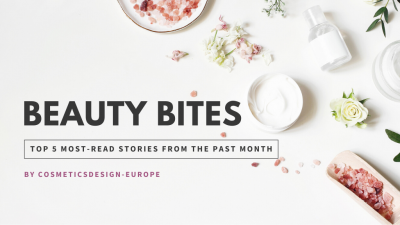Skin care retail: Brand loyalty and differentiation ‘more difficult to achieve’ post-pandemic, says Mintel
![Many skin care consumers still value in-store sampling and testing, so brands need to work hard to balance out online and brick and mortar retail strategies [Getty Images]](https://www.cosmeticsdesign-europe.com/var/wrbm_gb_food_pharma/storage/images/_aliases/wrbm_large/publications/cosmetics/cosmeticsdesign-europe.com/headlines/market-trends/skin-care-retail-needs-balance-between-online-and-offline-says-mintel/15607541-1-eng-GB/Skin-care-retail-needs-balance-between-online-and-offline-says-Mintel.jpg)
With the online beauty boom after COVID-19, it has become harder for skin care brands to stand out and engage with shoppers who still enjoy and rely on traditional tactile engagement ahead of purchase, says Mintel.
The COVID-19 pandemic saw some serious beauty consumption shifts take place in 2020, with effects still being felt today in 2022. But despite hardships across the beauty board, skin care, thanks to its alignment with self-care, wellness and skinimalism, had soared and was set hit €152bn in sales globally by 2025, according to Euromonitor International.
But with this rising engagement in skin care had also come an increasingly competitive online retail space, not entirely adapted to skin care purchases – traditionally associated with in-store sampling and testing.
Online and in-store strategies must be executed ‘in tandem’
“Despite skin care being easier to sell online than other beauty categories, such as makeup and fragrances, most skin care consumers continue to shop in-store, highlighting the importance of continuing to develop the in-store shopping experience – in addition to existing or new online channels,” said Samantha Dover, beauty and personal care category director at Mintel.
Writing in a recent blog piece, Dover said it was therefore critical skin care brands developed online and offline experiences “in tandem”.
“Online activations can erode the need and/or desire to shop in-store, with ongoing investment and innovation aiming to remove key barriers to purchasing online. As a result, the online experience of shopping for skin care can feel superior. However, there are opportunities to ensure the in-store experience matches the one online when shopping for facial skin care,” she said.
There were opportunities, for example, to develop in-store facial skin care discoveries with improved consultations, sampling opportunities and technology to provide additional information to consumers on the shop floor, she said. Similarly, retailers could better curate products in-store according to skin type, sub-categories or even eco and ethical preferences, better reflecting how consumers shop skin care.
Overcoming online challenges – emotive language and ‘newness’
When working to improve online engagement in skin care, Dover said it was essential beauty brands considered the consumer experience throughout all stages of NPD and marketing.
“Consumers are often overwhelmed by limitless choice when shopping online for skin care. While achieving differentiation is challenging, it is important – as branding, packaging and online shopping experiences all influence what consumers buy and where they shop,” she said.
Importantly, brands had to work extra hard at overcoming a key barrier to purchasing online – the “inability to experience how products feel on the skin”, she said. And there were many new ways brands could convey texture online, such as via emotive language or spotlighting ‘newness’ like next-generation textures, according to Dover.
“While somewhat at odds with sustainability demands, consumers are looking for retailers that excite them with new products. This showcases the direct impact NPD has on the purchase journey, as consumers will inevitably be drawn to retailers based on innovation.”
Most online beauty and personal care retailers had dedicated sections for new and trending products which worked well for this purpose, making it easier for consumers to navigate newness, she said. And this was a strategy that could, and should, also be applied in brick and mortar retailers as well, she added.
Strengthening online review credibility and functionality could also help engage skin care consumers online, as many were increasingly relying on reviews to verify purchase decisions – a trend validated by Bazaarvoice’s most recent retail report noting peer-to-peer insight was now the most powerful influencer in global retail purchases.
‘Fit for purpose’ skin care shopping
In any case, whether working online or offline, Dover said it was about adapting to each channel and making them “fit for purpose”.
“…Brands should differentiate and improve the retail experience in-store and online by playing to the strengths of each channel and utilising tech at every touchpoint, while also continuing to remove the core barriers to entry that deter facial skin care consumers from online purchases,” she said.

![Colour cosmetic consumers will expect more from immersive and virtual worlds, turning to tech to help purchase decisions [Getty Images]](https://www.cosmeticsdesign-europe.com/var/wrbm_gb_food_pharma/storage/images/_aliases/wrbm_medium/publications/cosmetics/cosmeticsdesign-europe.com/article/2022/10/13/future-of-makeup-2025-wgsn-report-spotlights-post-pandemic-creativity-beauty-tech-and-metaverse/15848012-1-eng-GB/Future-of-makeup-2025-WGSN-report-spotlights-post-pandemic-creativity-beauty-tech-and-metaverse.jpg)
![Shopping for any product is a multisensory experience for consumers that involves visuals, touch and smell among other things [Getty Images]](https://www.cosmeticsdesign-europe.com/var/wrbm_gb_food_pharma/storage/images/_aliases/wrbm_medium/publications/cosmetics/cosmeticsdesign-europe.com/article/2022/09/22/beauty-neuroscience-needs-focus-for-product-design-fragrance-use-says-professor-charles-spence-at-ifscc-2022/15787806-1-eng-GB/Beauty-neuroscience-needs-focus-for-product-design-fragrance-use-says-Professor-Charles-Spence-at-IFSCC-2022.jpg)
![How will beauty retail evolve? What might products look like? And how will brands bring everything together online and in-store? [Getty Images]](https://www.cosmeticsdesign-europe.com/var/wrbm_gb_food_pharma/storage/images/_aliases/wrbm_medium/publications/cosmetics/cosmeticsdesign-europe.com/headlines/market-trends/cosmeticsdesign-beauty-tech-webinar-with-sephora-shiseido-orveon-and-experts-brainstorm-future/15777921-1-eng-GB/CosmeticsDesign-beauty-tech-webinar-with-Sephora-Shiseido-Orveon-and-experts-brainstorm-future.jpg)









![Dr. G is continuing to expand in South East Asia with a new store in Malaysia. [Dr. G]](https://www.cosmeticsdesign-europe.com/var/wrbm_gb_food_pharma/storage/images/_aliases/wrbm_tiny/publications/cosmetics/cosmeticsdesign-asia.com/headlines/business-financial/dr.-g-doubles-down-on-sea-expansion-on-the-back-of-sunscreen-popularity/16498790-1-eng-GB/Dr.-G-doubles-down-on-SEA-expansion-on-the-back-of-sunscreen-popularity.jpg)




